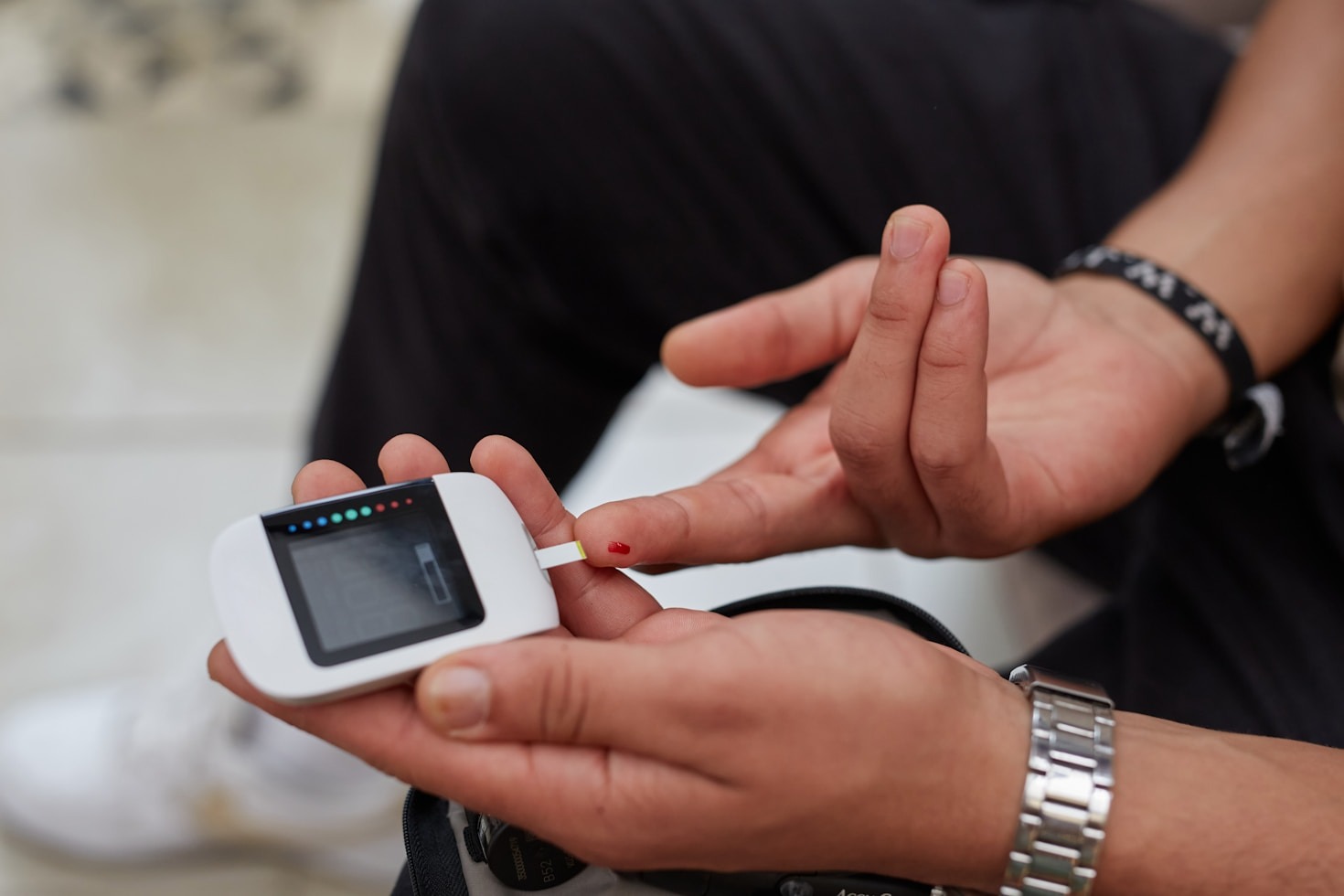Have you been feeling exhausted lately, struggling with chronic blood sugar imbalance? You’re not alone. Many women over 30 face this silent challenge that affects energy levels, mood, and even sleep. It’s time we address these frustrations together and take steps toward healing. This article will guide you through understanding the impacts of blood sugar fluctuations and provide actionable steps to help restore your body’s natural rhythms.
Understanding Chronic Blood Sugar Imbalance
Chronic blood sugar imbalance can feel like a weight on your shoulders, especially for women over 30. It is a condition where your blood glucose levels fluctuate unpredictably, leading to a variety of unwanted symptoms. When your body can’t maintain stable blood sugar levels, it can result in feelings of fatigue, irritability, and even cravings that feel impossible to control.
The body relies on a natural balance between insulin and glucose. When this balance is disrupted, it can lead to both physical and emotional challenges. Understanding the root causes—like diet, lifestyle, and even stress—is crucial in navigating your path toward wellness.
Signs and Symptoms of Blood Sugar Dysregulation
Being aware of the signs of blood sugar dysregulation can empower you to take action before it becomes overwhelming. Here are some common symptoms:
- Fatigue: This isn’t just being tired; it’s an overwhelming exhaustion that can make daily activities feel like a chore.
- Cravings: Sudden and intense cravings for sweets or carbohydrates can be a signal that your blood sugar is imbalanced.
- Mood Swings: Unexplained irritability or anxiety can link back to unstable blood sugar levels.
- Brain Fog: Finding it hard to concentrate? Blood sugar imbalances can affect mental clarity.
- Insomnia: Trouble sleeping through the night may also indicate underlying blood sugar issues.
By recognizing these signs, you’re one step closer to taking control of your health.
The Connection Between Blood Sugar and Hormonal Health
Your hormonal health is intricately tied to your blood sugar levels. Hormones like estrogen and progesterone play vital roles in how your body manages glucose. When blood sugar swings occur, they can disrupt these hormone levels, leading to a cascade of symptoms, including mood volatility and irregular cycles.
Many women experience exacerbated PMS symptoms, weight gain, or stubborn belly fat due to this imbalance. This cycle can feel relentless, but understanding this connection can shed light on the importance of managing blood sugar effectively.
Daily Habits That Disrupt Blood Sugar Levels
Sometimes, it’s the small habits we might overlook that can severely disrupt our blood sugar balance. Consider these everyday habits:
- Poor Meal Timing: Skipping meals or not eating regularly can lead to dips in blood sugar.
- High Sugar Intake: Consuming refined sugars and processed foods creates spikes in blood sugar that your body struggles to manage.
- Lack of Sleep: Insufficient sleep can increase cortisol levels, leading to glucose dysregulation.
- Over-reliance on Caffeine: While it may provide a quick pick-me-up, too much caffeine can destabilize your blood sugar.
Identifying and correcting these habits may seem daunting, but you have the power to cultivate a more balanced routine.
Nourishing Foods for Stabilizing Blood Sugar
Changing your diet can significantly impact your blood sugar levels. Here’s a list of nourishing foods that can help:
- Whole Grains: Foods like quinoa, brown rice, and oats provide sustained energy without causing spikes.
- Healthy Fats: Incorporate avocados, nuts, and seeds into your meals to promote fullness and stabilize blood sugar.
- Lean Proteins: Chicken, fish, and legumes are perfect for maintaining balance throughout the day.
- Fiber-Rich Vegetables: Vegetables such as kale, broccoli, and bell peppers slow down glucose absorption.
By choosing these foods, you’re not just feeding your body; you’re nurturing your well-being.
The Role of Exercise in Blood Sugar Management
Exercise is not just about losing weight; it plays a tremendous role in regulating blood sugar levels. When you engage in physical activity, your muscles utilize glucose for energy, which helps lower blood sugar levels. Whether it’s a brisk walk, a dance class, or yoga, moving your body regularly can provide powerful benefits.
Find an activity you enjoy so that it feels less like a chore and more like a celebration of your body’s abilities. Just 30 minutes a day can help balance hormones and improve your mood.
Stress Management Techniques for Better Balance
Stress has a significant impact on your blood sugar levels. High levels of stress hormones can lead to increased glucose production, resulting in imbalances. It’s essential to incorporate stress management practices into your daily routine. Here are some effective techniques:
- Meditation: Even a few minutes of mindful breathing can calm your mind and reduce stress.
- Journaling: Writing down your thoughts can help process emotions and relieve anxiety.
- Nature Walks: Spending time outside connects you to the earth and reduces stress.
- Gratitude Practice: Focusing on what you’re grateful for can shift your mindset and decrease feelings of stress.
By managing stress effectively, you can reduce its impact on your blood sugar.
Supplements That Support Blood Sugar Health
Natural supplements can offer additional support in restoring your blood sugar balance. Some popular options include:
- Chromium: This mineral may improve insulin sensitivity.
- Cinnamon: A natural spice that can help regulate blood sugar levels.
- Alpha-Lipoic Acid: This antioxidant can enhance glucose uptake.
- Magnesium: Essential for many bodily functions, magnesium can help balance blood sugar levels.
It’s vital to consult with a healthcare provider before starting any new supplement regimen to ensure they’re safe for you.
Creating a Personalized Action Plan for Balance
Crafting a personalized action plan is your blueprint for achieving stable blood sugar levels. Start by identifying your specific challenges and then set realistic, measurable goals. Here are some steps to get you started:
- Track Your Symptoms: Keep a journal of your food intake, symptoms, and mood to identify patterns.
- Create a Meal Plan: Plan meals that include a balance of proteins, fats, and carbohydrates.
- Schedule Exercise: Block out time for physical activities you love, making it a part of your daily routine.
- Designate “Quiet Time”: Include daily stress-reducing techniques that resonate with you.
Your action plan can be a living document that you adjust as you learn more about what works best for you.
Inspiring Success Stories of Women Who Overcame This Challenge
Many women have faced the daunting issue of chronic blood sugar imbalance and emerged victorious! Stories of transformation speak volumes about resilience. For example, Anna, a full-time mom, experienced relentless fatigue and mood swings for years. After implementing diet changes, stress-reduction techniques, and regular exercise, she noticed significant improvement in her energy levels and emotional well-being.
Like Anna, many women discover that with the right support and lifestyle changes, it’s possible to regain control and enhance their quality of life. Remember, you are not alone on this journey, and there’s hope for a healthier future!
Improving your health and well-being is possible, and it starts with small, actionable steps. Just as others have transformed their lives, you can too. Click the link above to discover solutions that can help you regain balance and vitality in your life.










